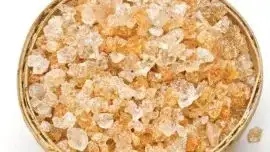As winter blankets us, there’s a traditional ingredient making a comeback in kitchens across the globe – gondh, also known as edible gum, gond, gaund, dink or antu.
Derived from the sap of certain trees, this age-old culinary gem is not just a dietary delight but also boasts a sea of health benefits.
What is gondh?
Gondh is extracted from the resin of trees, primarily sourced from the acacia species. Traditionally used in Ayurveda and Indian cuisine, gondh is gaining global recognition for its unique properties and nutritional advantages, especially during the winter months.
What are the health benefits of Gondh?
Keeps you warm from the inside
One of the primary health benefits of consuming Gondh is its ability to generate heat in the body. During winter, when the temperature drops, incorporating Gondh into your diet can help keep the body warm. Its thermogenic properties make it an ideal addition to meals helping to beat the cold weather and promote overall well-being.
Fights against seasonal illness
Rich in antioxidants, Gondh supports the immune system and protects the body against seasonal illnesses. It is also a natural source of essential minerals like calcium, magnesium, and phosphorus, contributing to bone health. Additionally, Gondh is known to be beneficial for skin health and can help beat dryness and promote a healthy complexion.
Helps in digestion
One of the standout features of Gondh is its ability to aid digestion. Often consumed as gum in its natural form, it can be chewed or added to various recipes. The gum’s soluble fibre content helps regulate bowel movements and alleviate constipation issues helping those seeking digestive wellness.
A potential health-management aid
For those with weight management goals, Gondh is a potential ally. Its fibre content promotes a feeling of fullness, reducing overall food intake and aiding in weight control. Moreover, Gondh’s low glycemic index makes it a suitable option for individuals monitoring their blood sugar levels.
One can include Gondh into their winter diet by adding it to desserts, stews, or even as a natural thickening agent in soups.


